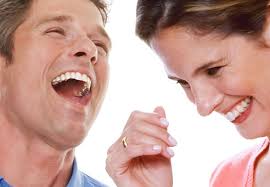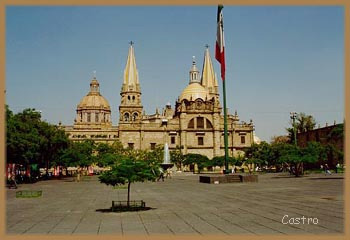LAUGH OUT LOUD!
Who hasnt laugh about a silly thing that someone say or about a joke or maybe when someone fall in a very funny way and there comes the laugh that you can avoid! Well laugh is so much more than that, lets see...
What exactly is laugh?
Is an involuntary reaction to certain external or internal stimuli. Laughter can arise from such activities as being tickled, or from humorous stories or thoughts. Most commonly, it is considered a visual expression of a number of positive emotional states, such as joy, mirth, happiness, relief, etc.
Factors such as age, gender, education, language, and culture are determinant factors as to whether a person will experience laughter in a given situation.
Laughter is a part of human behavior regulated by the brain, helping humans clarify their intentions in social interaction and providing an emotional context to conversations. Laughter is used as a signal for being part of a group, it signals acceptance and positive interactions with others. The study of humor and laughter, and its psychological and physiological effects on the human body, is called gelotology.

What causes the laughter in our body?
Neurophysiology indicates that laughter is linked with the activation of the ventromedial prefrontal cortex, that produces endorphins. Scientists have shown that parts of the limbic system are involved in laughter. This system is involved in emotions and helps us with functions necessary for humans' survival. The structures in the limbic system that are involved in laughter: the hippocampus and the amygdala.
Laughter causes the dilatation of the inner lining of blood vessels, the endothelium, and increases blood flow. Theorize that beta-endorphin like compounds released by the hypothalamus activate receptors on the endothelial surface to release nitric oxide, thereby resulting in dilation of vessels. Other cardioprotective properties of nitric oxide include reduction of inflammation and decreased platelet aggregation.
But the main reason I choose this topic for make the note is because..
Laughter is the best medicine!
Humor is infectious. The sound of roaring laughter is far more
contagious than any cough, sniffle, or sneeze. When laughter is shared, it binds
people together and increases happiness and intimacy. Laughter also triggers
healthy physical changes in the body. Humor and laughter strengthen your immune
system, boost your energy, diminish pain, and protect you from the damaging
effects of stress. Best of all, this priceless medicine is fun, free, and easy
to use.
Now you see in what aspects laughter helps there is another and the most important thing that laugh can do, and it coul say that is literally a medicine.
Laughter Therapy
Laughter is a natural medicine. It lifts our spirits and makes us feel happy. Laughter is a contagious emotion. It can bring people together. It can help us feel more alive and empowered.
Laughter therapy, also called humor therapy, is the use of humor to promote overall health and wellness. It aims to use the natural physiological process of laughter to help relieve physical or emotional stresses or discomfort.
For people living with cancer, it may seem strange to find humor when facing such serious issues. Yet, laughter can be helpful in ways you might not have realized or imagined.
Laughter can help you feel better about yourself and the world around you. Laughter can be a natural diversion. When you laugh, no other thought comes to mind. Laughing can also induce physical changes in the body. After laughing for only a few minutes, you may feel better for hours.

When used in addition to conventional cancer treatments, laughter therapy may help in the overall healing process.
According to some studies, laughter therapy may provide physical benefits, such as helping to:
- Boost the immune system and circulatory system
- Enhance oxygen intake
- Stimulate the heart and lungs
- Relax muscles throughout the body
- Trigger the release of endorphins (the body’s natural painkillers)
- Ease digestion/soothes stomach aches
- Relieve pain
- Balance blood pressure
- Improve mental functions (i.e., alertness, memory, creativity)
- Improve overall attitude
- Reduce stress/tension
- Promote relaxation
- Improve sleep
- Enhance quality of life
- Strengthen social bonds and relationships
- Produce a general sense of well-being
PATCH ADAMS THE FATHER OF THE LAUGHTERTHERAPY.
Patch Adams is best known for his work as a medical doctor and a clown, and he is also a social activist who has devoted 40 years to changing America's health care system. He believes that laughter, joy and creativity are an integral part of the healing process.
Laughter Centers
Across the world exist some laughter centers, here two of them:
Cancer Treatment Cneters of America(CTCA): We fight cancer using an integrative approach. Our Mind-Body Medicine Department offers supportive options, including laughter therapy. Laughter therapy strives to help you use and enjoy laughter as a tool for healing. Laughter Club is based not on humor or jokes, but rather on laughter as a physical exercise. One group laughter exercise involves patients standing in a circle, with the leader in the middle. Patients put their fingertips on their cheekbones, chest or lower abdomen and make “ha ha” or “hee hee” sounds until they felt vibrations through their bodies. Dr. Puckett says during these exercises, it is hard for people not to join in because laughter is so contagious.
According to Dr. Puckett, at the end of a laughter therapy session, patients have said things like "I didn't even think about cancer during Laughter Club" and "That felt great! Things have been so hard that we hadn't laughed in months." Dr. Puckett adds that, just recently, the eight-year-old daughter of a CTCA patient who attended Laughter Club said afterwards: "I never thought about laughing everyday, but now I realize I can. Like even when I don't feel happy, I can still laugh and feel better."
Comments like the one that is underlined are the ones that make you work harder for that kids and try to take out a smile from them.
Civil Hospital of Guadalajara: "Laughter is the best medicine of the mind, and it's free. For a hospitalized child and immersed in their own problems, and make him laugh distract decreases in disease concerns and creates opportunities to improve, "says Dr. Horacio Padilla Muñoz, chief of pediatrics, Civil Hospital" Fray Antonio Alcalde "(HCFAA).
This alternative in disease management "is not an allopathic or homeopathic therapy, but psychological. It's actually one of the most important, because laughing prolongs life. Dr. Patch Adams is a typical example, as through laughter has cured cancer patients. "
"It is important to have people who know how to get laughs on the sick, they have the capabilities Clown: appropriate body language, mime face and body expressions, as this will cause, as well as laughter in patients, adequate empathy between doctor and patient. "
"As we all have the grace not to generate laughter at someone, physicians, psychologists, paidopsiquiatras, nurses and hospital social workers took a course to develop qualities that allow provoke laughter, because our goal is to implement alternative healing laughter therapy .
So, now that you see all the information about this, I think you will start to laugh more and you may prefer always to be happy than be sad and depress. Rememer all the benefits that just one smile or a simple "Ja ja" can make for you.


















